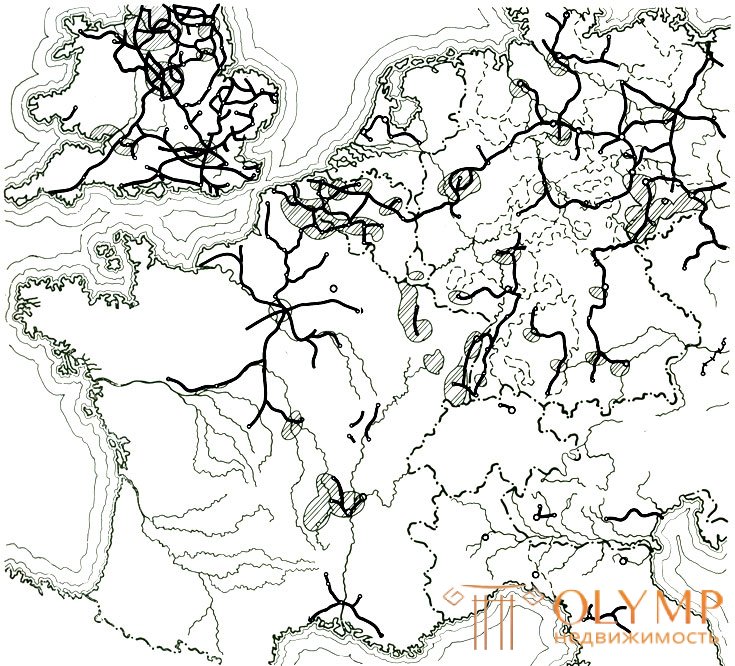
Definition : settlement determines the process and result of the formation of human settlements and expresses the material-spatial form of organization of society. A broad understanding of this term includes all aspects of urban planning at all scale levels: the formation of a unified system of settlement of the country, regional and local systems of settlement, cities and towns.
The first settlements arose 12–13 thousand years ago and were predominantly agricultural in nature. The process of their development was extensive, that is, carried out as the population grew. About 3 thousand BC. er first cities appear. Famous cities of the ancient world: Babylon - 80 thousand people, Athens - 300 thousand people, Rome - 1 million people. Each city was the center of the settlement area (zone of distribution of political and economic influence of the city center).
In Europe, during the feudal period, the cities were formed on the basis of expanding posad surrounding the feudal castle, at an industrial enterprise or on the basis of a trade fair. Europe is characterized by the appearance of “free cities” with a system of self-government (municipalities).
The period of development of capitalism in Europe is associated with the rapid growth of large cities - centers of industry; the largest of them in the XIX century. - London, Paris. The industrial revolution of the mid XIX century. contributes to the emergence of highly urbanized territories, as a rule, on the basis of the mining and processing industries (Fig. 8, 9). By the turn of the XIX - XX centuries. Europe has 12 cities with a population of over a million.

Fig. 8. Scheme of railways and industrial areas of Western Europe, the end of the XIX century .
Railway network of Western Europe in the middle of the XIX century. The map shows the radial development of railways built from capitals to peripheral industrial areas. With increasing mobility of the population on a scale of entire countries and the presence of only dead-end stations in the capitals, the crisis of urban traffic has increased immeasurably
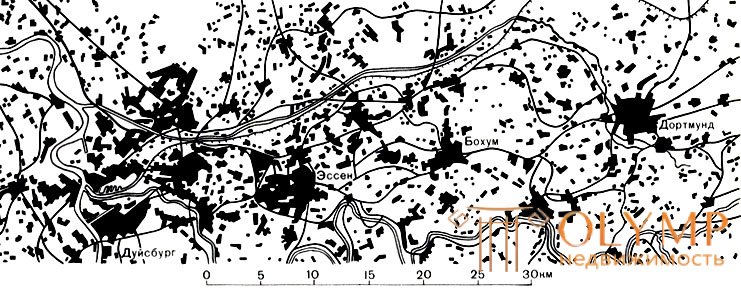
Fig. 9. Ruhr area, Germany,. Map of the cities of the Ruhr area at the turn of the XIX and XX centuries
Development of settlement systems in Russia /
On the territory of the European part of Russia in the II - IX centuries. formed - focal system of settlement.
♦ II - V centuries. Settlement is represented by fortified settlements (settlements surrounded by a palisade), which have agricultural land around them (Fig. 10).
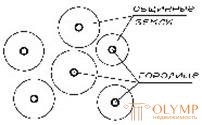
Fig. ten
♦ VI - IX centuries. There is a selection of the centers of the city of princely power, who seek to subjugate the surrounding territory (Fig. 11).

Fig. eleven.
♦ IX - XII centuries. Formed a direct system of settlement.
In the early feudal period, a linear or water-communication system of settlement develops. The most famous system was formed along the path “from the Varangians to the Greeks” (Fig. 12).
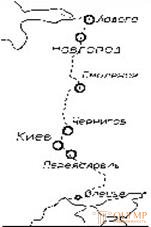
Fig. 12
♦ XII - XV centuries. An annular (defense-strategic) settlement system is being formed.
In the period of feudal fragmentation, independent princely states arise. The centers of ring systems are Novgorod, Suzdal, Moscow, etc. (Fig. 13).
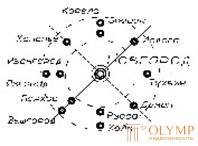
Fig. 13
♦ XV - XIX centuries. Formed star system of settlement.
Gradually, the frame of the resettlement system on the radial transport directions from the main centers (originally Moscow, at the beginning of the 18th century - St.
Petersburg, and also Kiev, Kazan). In Western Siberia, Tyumen, Tobolsk, Tomsk become centers of settlement (Fig. 14).
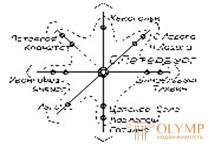
Fig. 14
By the end of the XIX century. settlement system becomes complex. It combines various forms: from stellate to focal preserved on the periphery.
Active urban development of Siberia began in the XVI centuries. The first Russian cities and forts were placed in the most important junctions of the system of river areas.
At the end of the XVI century. and throughout the XVII century. River transport was the main means of communication, the main waterway from Moscow to Siberia passed along the rivers Tura, Tobol, Irtysh, Ob and Tom. The first major cities of Western Siberia: Tyumen, Tobolsk and Tomsk.
In the 1730s laid the Moscow-Siberian highway, initially it passed through the largest urban centers. The route of the tract was transferred twice - in 1763 it passed around Tara, and in 1838 left Tobolsk aside. With the transfer of the main transport artery to the south, there is a decline of many northern settlements. At the same time, cities along the road arise and develop.
In 1891, a decision was made on the construction of the Trans-Siberian Railway. The route of the railway passes in the direction of the existing axis of settlement - the Moscow-Siberian highway. The main town planning activity is concentrated along the railway line.
Further development of the resettlement system is associated with the onset of industrialization. In the late 1920s. yy begins industrial and urban development of the Kuzbass. A system of industrial cities is being formed: Novokuzetsk, Kemerovo, Prokopyevsk, etc.
During the Great Patriotic War, cities located on the railways receive a stream of evacuated enterprises and specialists, which significantly increases their industrial potential.
Since the mid 1960s. the development of northern oil and gas regions begins
Western Siberia. Formed areas of settlement in the area of the ancient cities of Tyumen and Surgut, in the middle course of the Ob, a new large center - Nizhnevartovsk. In the areas of development of oil and gas fields, a number of new cities appear (Fig. 15). In the 1970s – 1980s In SibZNIIEP, active research is being conducted in the field of the development of the settlement system in Western Siberia (Fig. 16).
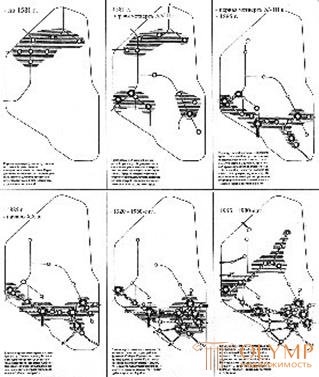
Fig. 15. Displacement of town-planning activity in the process of evolution of the settlement system of Western Siberia
For the system of settlement in the West Siberian region is typical:
• at all stages of the development of the region, the population density remained significantly lower than in the European regions of the country and higher than in Eastern Siberia;
• the population of the region is distributed very unevenly across the territory from 2.2 people / sq. Km in the Tyumen region to 33.3 people / sq. Km in Kemerovo;
• larger forms of settlement, the distance between the center-cities is much greater than in the western part of the country (4 times);
• the high role of transport communications in the process of forming a settlement system, the population of the region is exposed to the main transport routes and is concentrated in the main nodes of the transport system.
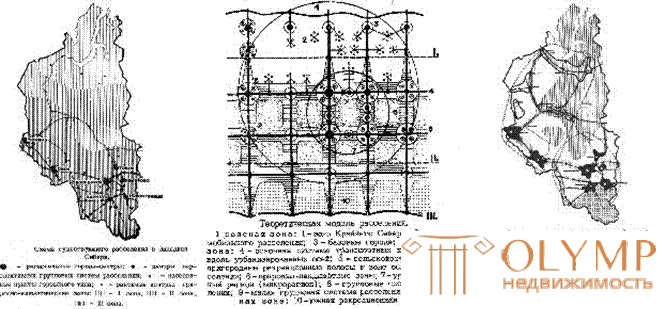
Fig. 16. Theoretical developments on the development of the settlement system of Western Siberia, SibZNIIEP 1970-80.
The most important characteristic of settlement is its shape. There are two forms of settlement:
• autonomous - it develops in the conditions of the great remoteness of neighboring settlements and the weak development of functional and transport links between them;
• group - it is formed in the conditions of formation of stable relations between neighboring settlements in the sphere of labor, life and recreation of the population.
There are two types of settlement: urban and rural.
In the framework of urban settlement are distinguished:
• concentrated or concentrated (concentration of population in large and large cities);
• dispersed or dispersed (a significant part of the population is spread in a large number of small and medium-sized cities), a specific type is mobile settlement.
In the framework of rural settlement there are:
• large rural settlements;
• small settlements.
Что бы оставить комментарий войдите
Комментарии (0)